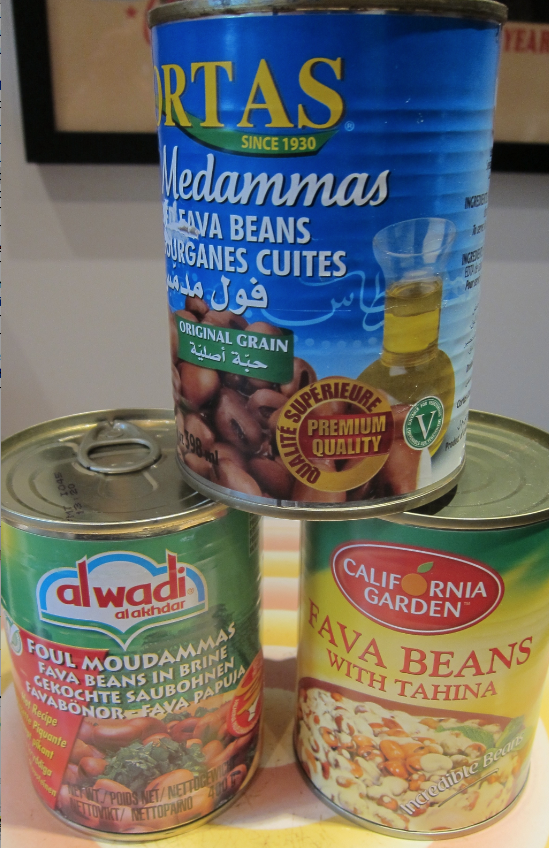Supermarket Explorer: Middle Eastern Foul Moudammas


Have you ever found yourself at the supermarket staring at a can or bag or bundle of something that looked intriguing, but intimidating at the same time? I have—more times than I can count. But I’m always up for a challenge, which is why I finally worked up the nerve to take home a can of foul moudammas, from the Middle Eastern section. The name, to its own detriment, doesn’t encourage impulse buys, but there was always something about those plump, brown beans that I found tempting. Today, I’m a foul fan, and I always have a can or two in my pantry.
Foul moudammas, also called “ful,” “fool,” and “foul” are simply cooked fava beans. They come in different canned varieties including foul with tomato sauce, foul in brine, and foul in tahini sauce (my favorite). They are eaten for breakfast throughout the Arab world, including Saudi Arabia, Egypt, and Syria. They’re also popular in Israel and Palestine—where I was lucky enough to try them the local way: mixed with chickpeas and swimming in olive oil. Cooked favas have a thick skin that gives them a bit of chew, and their flavor is mild but distinct.
Depending on the region, foul might be served mashed with fresh garlic and lemon juice, topped with a local cheese, or garnished with a hard-boiled egg. I simply simmer them with a bit of garlic, then add a splash of olive oil and serve with a salad of tomato, cucumber, and onion. (Bread is a good accompaniment, too, since you can use it to mop up the sauce.)
The next time you find yourself prowling the Middle Eastern section at your favorite supermarket (or scouting for goodies at your nearest Middle Eastern market), pick up a can and have a go, then tell us what you think! How did you prepare them? Did you like their flavor and texture? Will you buy them again? Share your comments below.